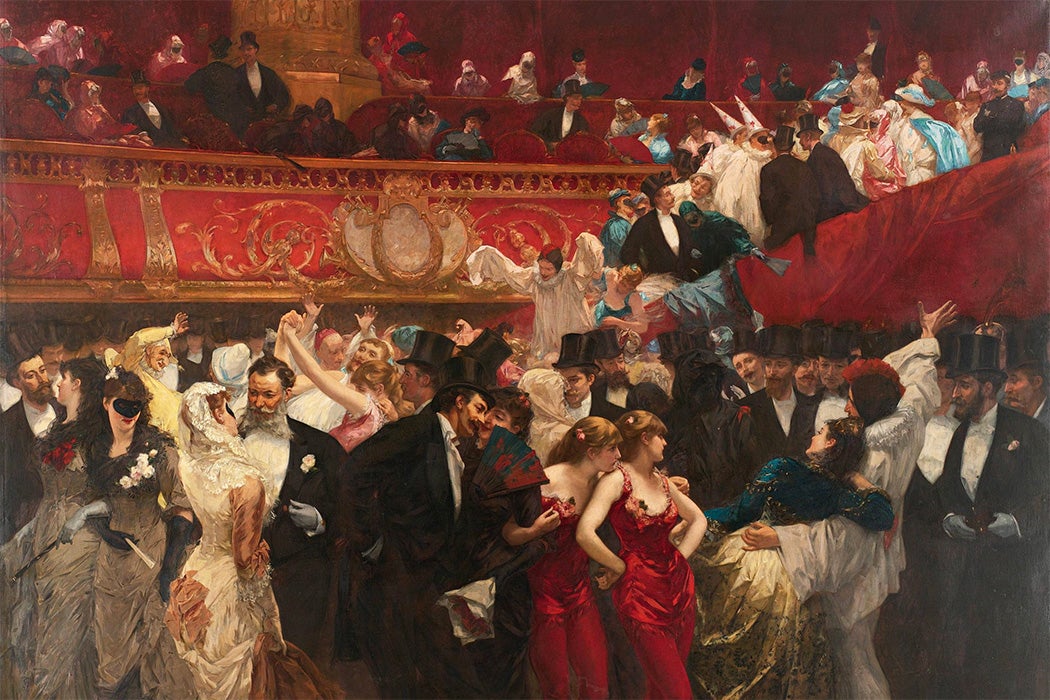Visiting the opulent Paris Opera at one point in the 1840s, novelist Paul DeKock described seeing a magistrate, dressed as the comic servant Arlequin, dancing in a group with a felon wearing judicial robes. As historian James H. Johnson writes, this kind of role reversal was a key aspect of the masked ball culture that briefly flourished in the city.
Commercial masked balls had occurred in Paris since 1715, Johnson writes, but these were upper-class affairs, and the masks were more a formality than true disguises. This changed in the 1820s and ’30s, as the boulevards of central Paris became mixed districts for shopping, financial business, and entertainment. These thoroughfares linked the working-class “Boulevard du Crime” in the east with elite new residential districts to the west. Among the new establishments popping up were theaters that hosted balls.
The balls rapidly became wildly popular with people across the class spectrum. By 1836, the Paris police claimed there were 180 public balls and more than 850 private ones on Mardi Gras.
“During the heyday of masked balls, the rich dressed as rag-pickers and thieves, and laundry-girls came as the aristocrats,” Johnson writes. “The wealthy attended for the thrill of rubbing shoulders with supposed outlaws.”
Among the costumes people might choose were stock characters like the Chicard, an irreverent troublemaker clad in a mix of clothing from different eras—eighteenth-century knee breeches, a centurion’s helmet made from a pail, and a single Napoleonic boot, for example. This outfit might disguise a cobbler, a student, or a wealthy dandy.
Women often came to the balls dressed as the Débardeur, a dockworker in an open white shirt, black pants, and a cap.
“The loose-limbed freedom of the Débardeur…was a joyous repudiation of the constraints of dress and comportment that corseted the lives of French women at mid-century,” Johnson writes.
Together, a Chicard and Débardeur might interrupt a dignified quadrille with a dramatic cancan, which, Johnson writes, was considered “shockingly sexual.” Violations of public conduct laws were common enough at the balls that the Paris police felt the need to include procedures for warning and then arresting dancers for indecent behavior in an 1831 manual. In one particularly chaotic instance in 1835, dancers at the storied Théâtre de l’Odéon defaced the marble staircase, pulled candelabra from walls, and drew a mustache and beard on the bust of King Louis Philippe.
Weekly Newsletter
Still, the balls continued for more than a decade and so did a certain amount of disorder. In 1843, a shop assistant ruefully described being arrested at his very first ball after attempting to imitate the dancers around him: “I had hardly even touched the parquet and in half a minute I was in the clink, where I looked pretty bad in my Mother Goose costume.”
But, by the mid-1860s, the era was over. Slum areas were demolished, and working-class Parisians largely moved out of the center city. Balls returned to being elite affairs, and elegant evening wear replaced exuberant costumes.







